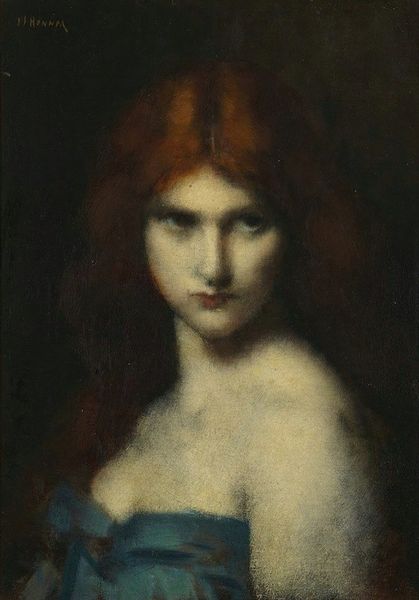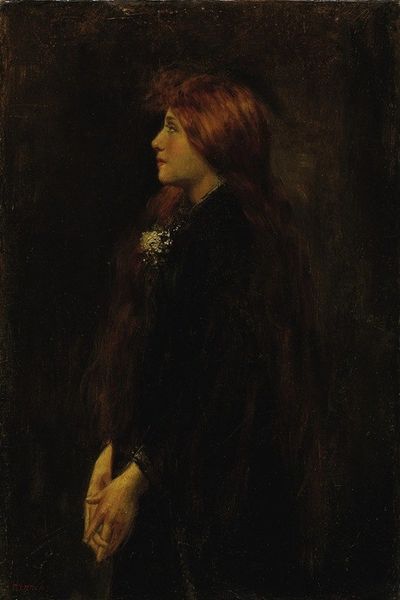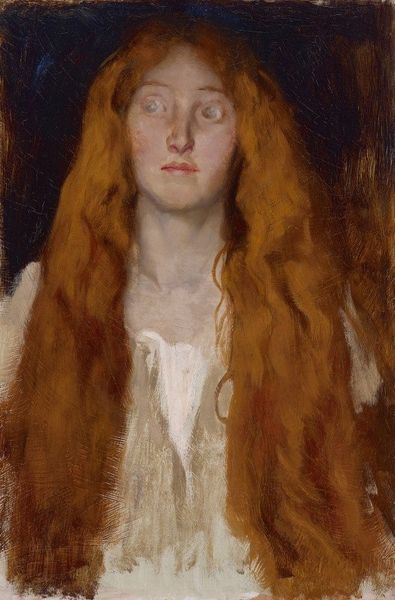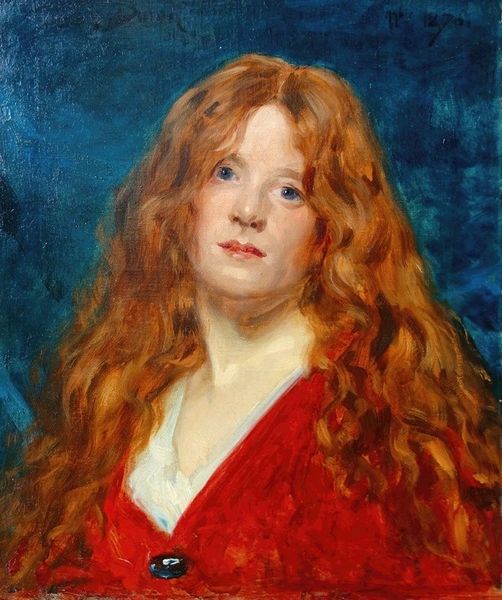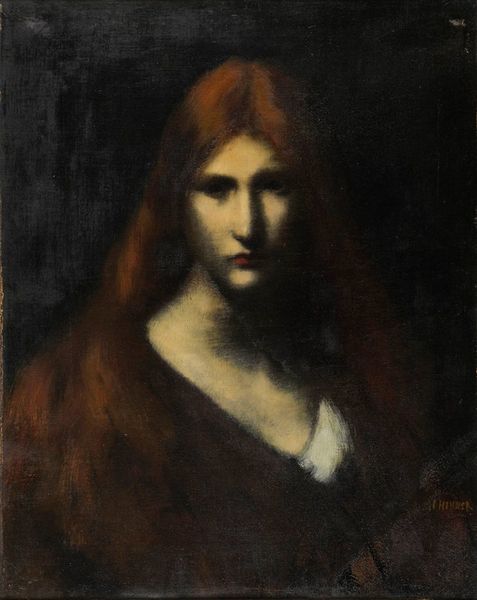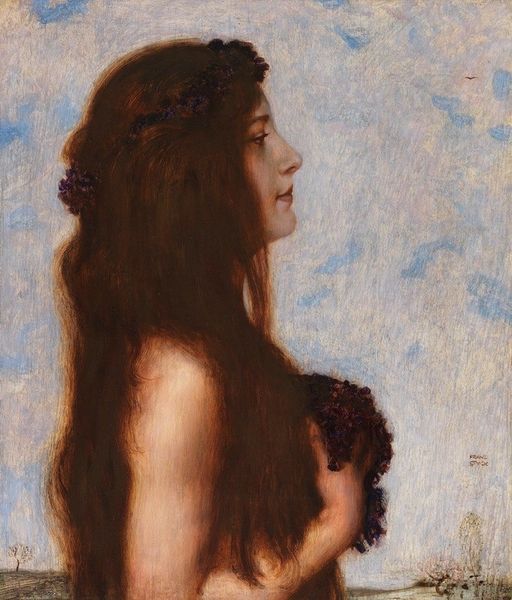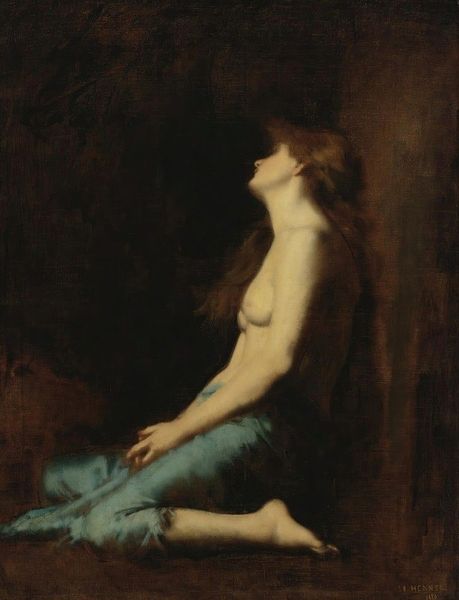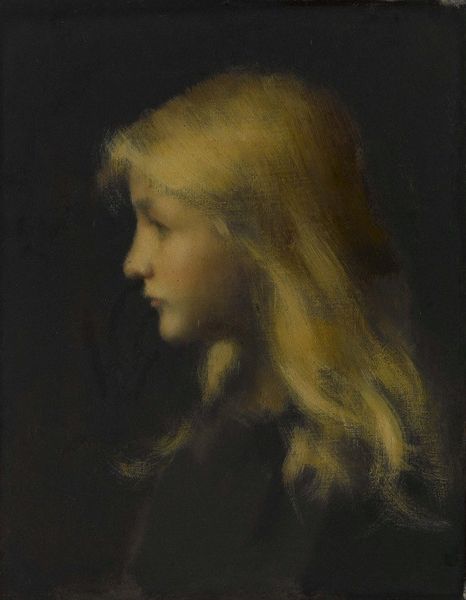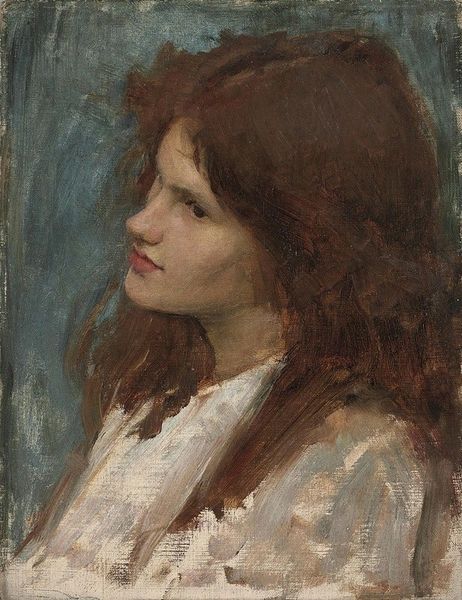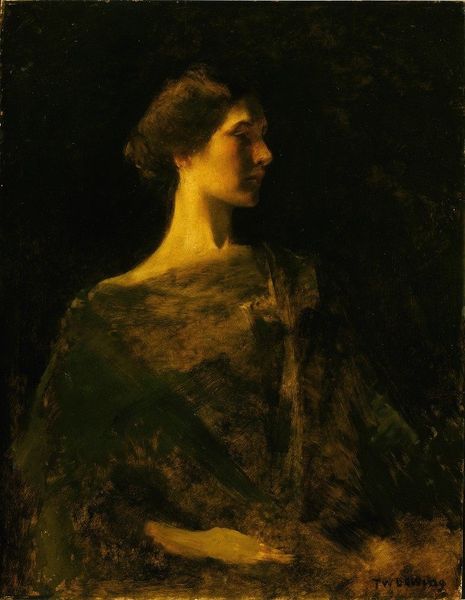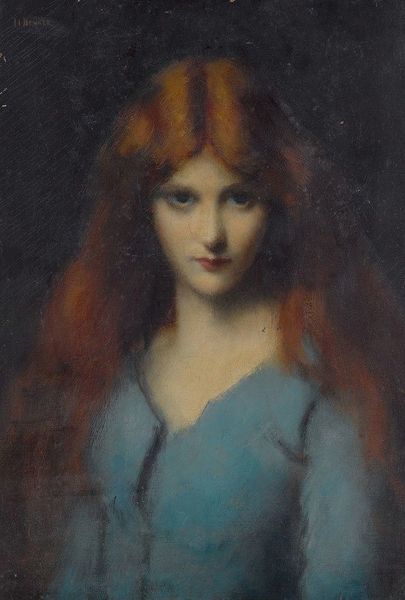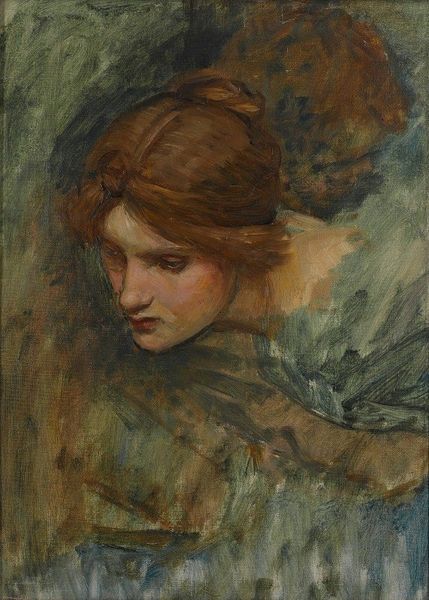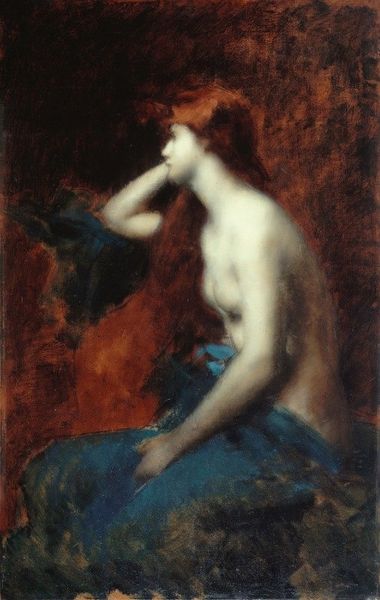
Copyright: Public Domain: Artvee
Editor: Here we have Franz von Stuck's "Cinderella" from 1899, rendered in oil paint. The dark background really makes her auburn hair stand out. It's such a simple, elegant portrait. What do you see in this piece from a materialist perspective? Curator: The very making of this painting is fascinating. Look at the materiality: oil paint, ground pigments mixed with oil, applied to canvas—the result of industrial processes making these materials readily available. How does this ease of access affect the very *concept* of a fairytale princess? Editor: That's interesting! I hadn't thought about the industrial revolution influencing the subject matter. Curator: Absolutely. And consider the "Cinderella" story itself. It speaks of labor, class, and transformation. Think about the labor involved in producing these materials. Where did Stuck get his canvas? Who prepared his paints? Editor: So, by focusing on the physical components, we're actually exploring the socio-economic context surrounding the painting’s creation? Curator: Precisely. We examine the societal conditions allowing such art to exist. The mass production that gives rise to art supplies parallels Cinderella’s transformation from labor to leisure. Editor: So it’s not just about *who* Cinderella is, but *how* the painting itself came to be through specific labor processes. I never considered the materials themselves as such key historical markers. Curator: It’s a lens for seeing the painting anew. Considering material realities is fundamental to understanding the work.
Comments
No comments
Be the first to comment and join the conversation on the ultimate creative platform.
